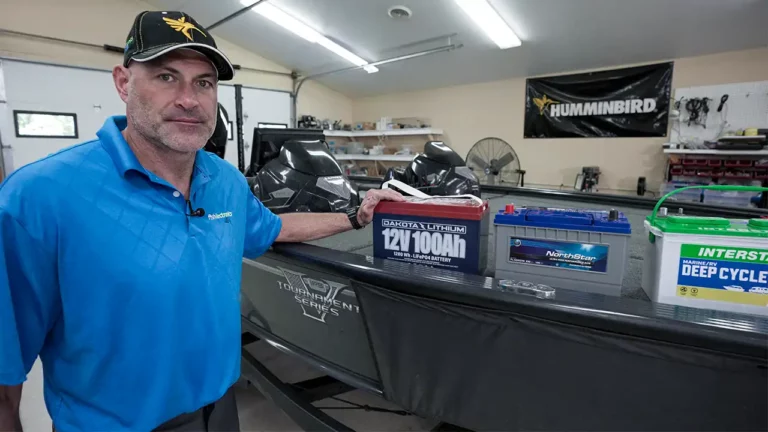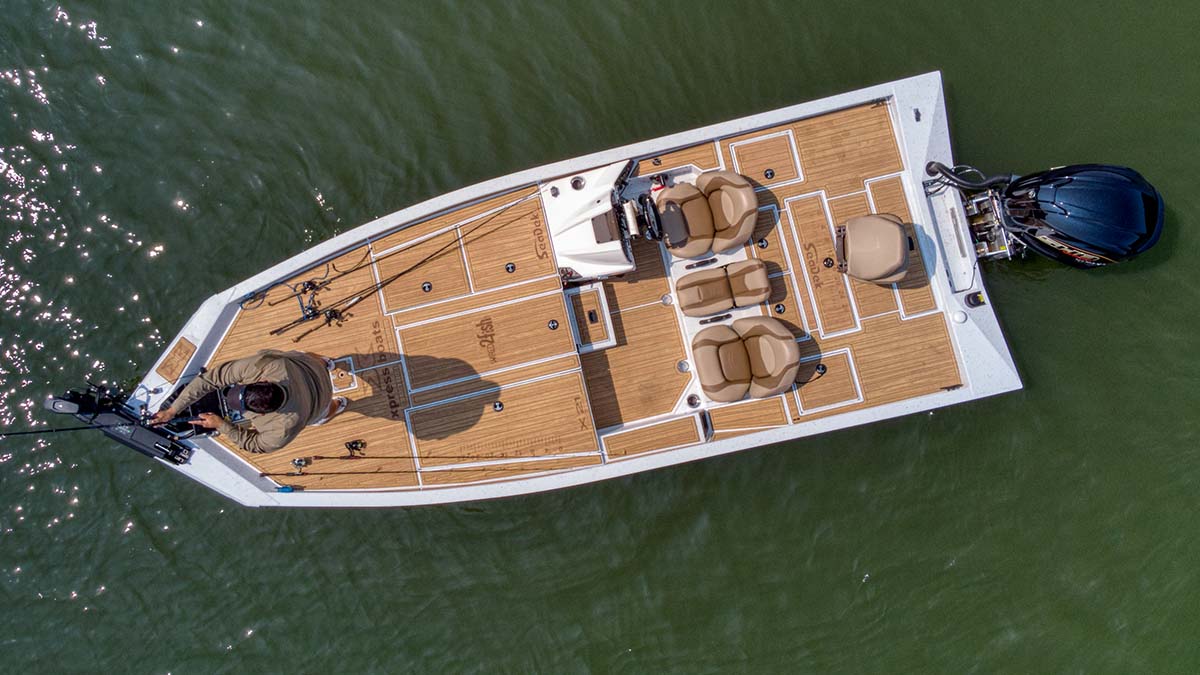Choosing the right marine battery for your boat can be overwhelming with the various options. Pro boat rigger Andy Kratochvil of Fish Lectronics overviews the different types of boat batteries and sizes, explains their pros and cons, and how to choose the best one for your needs. Marine batteries can be broadly categorized into flooded lead-acid, absorbed glass mat (AGM), and lithium batteries.
BATTERIES AS SHOWN
- LITHIUM – Dakota Lithium 12v 100Ah Deep Cycle LiFePO4 Battery: Buy at Walmart
- Learn more at Dakota Lithium
- CHARGER – Minn Kota Precision On-Board Marine Battery Charger: Buy at Bass Pro Shops
- FLOODED LEAD ACID – Interstate SRM-27
- AGM – NorthStar PL-AGM27M
FLOODED LEAD-ACID BATTERIES
Flooded lead-acid batteries have been around for the longest time and are generally the most affordable option. These batteries contain lead plates submerged in acid or electrolyte. They typically last 2-3 years with proper charging and maintenance, making them suitable for many boaters.
ABSORBED GLASS MAT BATTERIES
AGM marine batteries are an upgraded version of lead-acid batteries, with electrolytes absorbed into the plates. They are virtually maintenance-free, and there’s no risk of spilling harmful chemicals. While AGM batteries are heavier and twice as expensive as lead-acid batteries, their benefits make them a popular choice among boaters.
LITHIUM BATTERIES
Lithium batteries (LiFePO4) are the newest addition to the market, offering several advantages over traditional options. They are lightweight (about half the weight of lead-acid or AGM batteries) and have a longer lifespan, lasting up to 10-12 years. Lithium batteries have a consistent discharge rate, providing constant power throughout their life. Although they may be more expensive initially, their cost per year is comparable to AGM and lead-acid batteries over their lifespan.
DEEP CYCLE VS. CRANKING BATTERIES
When selecting a marine battery for trolling motor power, choose a deep-cycle battery designed for slow discharge over an extended period. Conversely, choose a cranking battery for starting your engine. Cranking batteries are engineered to deliver short and strong bursts of power. The marine industry offers three battery sizes: 24, 27, and 31. Minn Kota recommends a group 27 size for deep cycle batteries, but consider the size of your boat’s compartments before deciding.
BATTERY SIZE
Battery size is directly related to capacity, affecting the energy stored and the runtime of your trolling motor. For instance, a 100 amp-hour battery can power a trolling motor drawing 20 amps for five hours. It’s essential to follow safety guidelines when installing batteries, such as using battery post covers and circuit breakers and never connecting positive and negative poles on the same battery.
BATTERY CARE
At the end of the season, remove the batteries from your boat or ensure they’re fully charged and disconnected if removal isn’t an option. Avoid tying your trolling motor power supply with your starting battery, and use separate deep cycle batteries for your Minn Kota trolling motor. A quality battery charger such as Minn Kota’s On-Board Precision Charger offers charge cycles optimized for each battery technology.
With this comprehensive guide, you’ll be well-equipped to make an informed decision when purchasing your next marine boat battery, ensuring optimal performance and reliability.
















